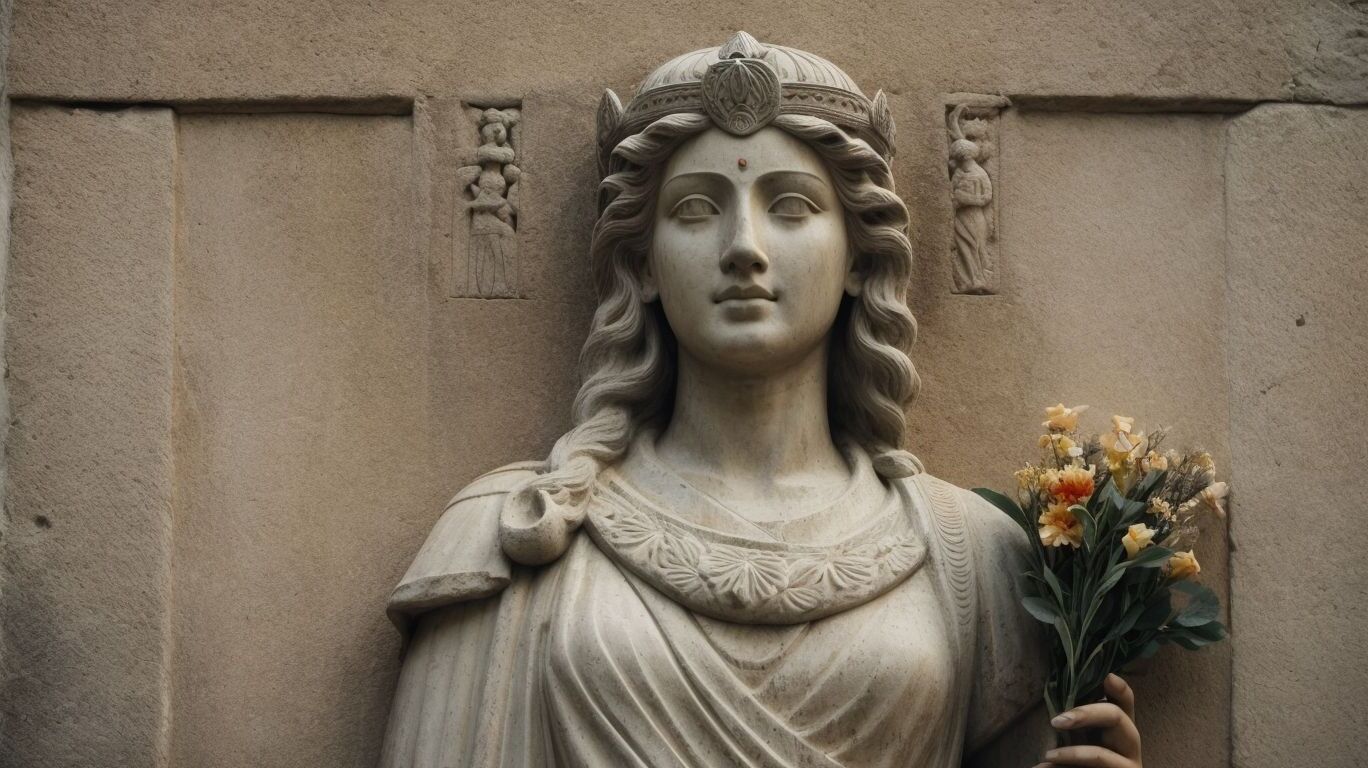
Who was Asherah? Asherah, often referred to as the "Queen of Heaven," was a major deity in ancient Near Eastern religions. She was worshipped as a mother goddess and consort to the chief god, El, in Canaanite mythology. Asherah's influence extended to various cultures, including the Israelites, where she was sometimes linked to Yahweh. Archaeological evidence, like inscriptions and figurines, suggests her worship was widespread. Asherah poles, wooden symbols representing her, were common in ancient worship sites. Despite efforts to erase her from religious texts, her legacy persists in historical and archaeological records. Dive into these 37 intriguing facts to uncover more about this enigmatic goddess.
Key Takeaways:
- Asherah, an ancient goddess, symbolized fertility and nature. She was worshipped in various cultures and her legacy continues to inspire modern art, literature, and environmental movements.
- Asherah's symbols, like trees and doves, represent her connection to the natural world. She is celebrated today as a symbol of female empowerment and ecological preservation.
Who is Asherah?
Asherah is a fascinating figure from ancient mythology. Often associated with fertility, motherhood, and the sea, she played a significant role in various ancient cultures. Let's dive into some intriguing facts about Asherah.
- Asherah was a major deity in ancient Canaanite religion, often considered the mother goddess.
- She was frequently depicted as a tree or a wooden pole, symbolizing life and fertility.
- In Ugaritic texts, Asherah is referred to as the consort of the god El, the chief deity.
- Asherah was also known as Athirat in some ancient texts.
- She is sometimes called "Lady of the Sea," highlighting her connection to water and the ocean.
- Asherah's worship included rituals involving sacred groves or gardens.
- In ancient Israel, Asherah was sometimes worshipped alongside Yahweh, the Hebrew God.
- The Bible mentions Asherah multiple times, often in the context of condemning her worship.
- Archaeological evidence, such as inscriptions and figurines, suggests that Asherah was widely venerated.
- Some scholars believe that Asherah's worship persisted in secret even after the rise of monotheism in Israel.
Asherah's Symbolism and Iconography
Asherah's imagery and symbols are rich and varied, reflecting her diverse roles and attributes. Here are some key aspects of her symbolism.
- The tree or pole, known as an Asherah pole, was a common symbol of her worship.
- Asherah is often depicted holding a lotus flower, symbolizing life and renewal.
- In some representations, she is shown with a lion, emphasizing her power and majesty.
- Asherah's connection to the sea is sometimes depicted through images of waves or water.
- She is occasionally portrayed with a crown of stars, linking her to the heavens.
- Asherah's symbols often include birds, particularly doves, representing peace and fertility.
- Some ancient artifacts show Asherah with multiple breasts, highlighting her role as a mother goddess.
- The serpent is another symbol associated with Asherah, representing wisdom and rebirth.
- Asherah's imagery sometimes includes a throne, signifying her status as a queen among the gods.
- In some cultures, Asherah was linked to the moon, further emphasizing her connection to the natural world.
Asherah in Different Cultures
Asherah's influence extended beyond the Canaanite religion, impacting various ancient cultures. Here are some examples of her presence in different traditions.
- In ancient Mesopotamia, Asherah was known as Ashratum or Ashratu.
- The Hittites referred to her as Asherdu or Asertu.
- In ancient Egypt, Asherah was sometimes identified with the goddess Hathor.
- The Phoenicians worshipped Asherah as Astarte, a goddess of love and fertility.
- In ancient Arabia, Asherah was known as Athirat-Yam, emphasizing her connection to the sea.
- Some scholars believe that Asherah influenced the Greek goddess Hera, who also had a role as a mother goddess.
- In the Hebrew Bible, Asherah is sometimes linked to the goddess Ashtoreth.
- The worship of Asherah in ancient Israel included rituals that were later condemned by the prophets.
- Asherah's influence can be seen in various ancient texts, including the Epic of Gilgamesh.
- Some modern neopagan traditions have revived the worship of Asherah, seeing her as a symbol of feminine power and nature.
Modern Interpretations and Legacy
Asherah's legacy continues to inspire and intrigue scholars, artists, and spiritual seekers. Here are some ways she is viewed and celebrated today.
- Some feminist scholars see Asherah as a symbol of female empowerment and resilience.
- Asherah's imagery is often used in modern art to represent fertility and the natural world.
- In contemporary literature, Asherah appears as a character in various novels and stories.
- Some modern spiritual movements incorporate Asherah into their practices, honoring her as a goddess of nature and life.
- Asherah's connection to trees and groves has inspired environmental movements to adopt her as a symbol of ecological preservation.
- The study of Asherah has led to a greater understanding of ancient Near Eastern religions and their influence on later traditions.
- Asherah's story continues to be a subject of academic research, shedding light on the complex interplay between ancient mythology and modern beliefs.
Final Thoughts on Asherah
Asherah, a fascinating figure from ancient mythology, holds a significant place in history. Known as a mother goddess, she was worshipped across various cultures, including the Canaanites and Israelites. Her association with fertility, motherhood, and nature highlights her importance in ancient societies. Despite attempts to erase her from religious texts, Asherah's influence persisted, showing her resilience and the deep-rooted reverence people had for her.
Understanding Asherah's role provides insight into the religious and cultural dynamics of ancient civilizations. Her story reminds us of the complexities and richness of human belief systems. Whether viewed as a deity, a symbol, or a cultural icon, Asherah's legacy continues to intrigue scholars and enthusiasts alike. By exploring her history, we gain a deeper appreciation for the diverse tapestry of human spirituality and the enduring power of myth.
Frequently Asked Questions
Was this page helpful?
Our commitment to delivering trustworthy and engaging content is at the heart of what we do. Each fact on our site is contributed by real users like you, bringing a wealth of diverse insights and information. To ensure the highest standards of accuracy and reliability, our dedicated editors meticulously review each submission. This process guarantees that the facts we share are not only fascinating but also credible. Trust in our commitment to quality and authenticity as you explore and learn with us.


